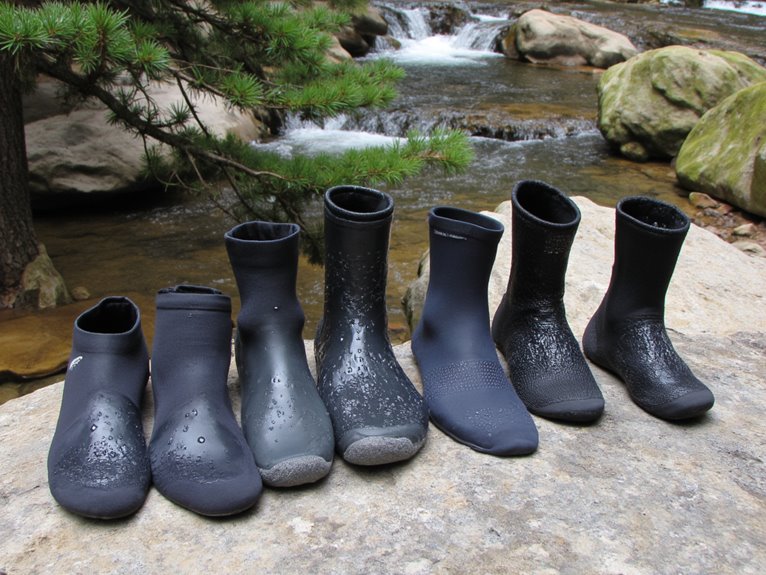How Does a Soda Can Stove Work?
A soda can stove works by balancing fuel, oxygen, and heat to sustain a consistent flame, utilizing combustion principles and heat transfer to efficiently cook food and boil water. The combustion process begins with fuel vaporization, mixing with oxygen, and reaching its ignition temperature. Heat transfer occurs through conduction, convection, and radiation, ensuring efficient energy exchange. Effective airflow and ventilation systems facilitate complete fuel combustion and minimize carbon monoxide risks. By understanding these fundamentals, outdoor enthusiasts can optimize their soda can stove for peak performance and venture into its diverse applications in camping, backpacking, and emergency preparedness situations – and discover more about its design variations and real-world uses.
We are supported by our audience. When you purchase through links on our site, we may earn an affiliate commission, at no extra cost for you. Learn more. Last update on 27th December 2025 / Images from Amazon Product Advertising API.
Combustion Principles at Play
When a soda can stove is in operation, the principles of combustion are intricately intertwined, relying on the delicate balance of fuel, oxygen, and heat to sustain a consistent flame.
The combustion process begins with fuel, typically denatured alcohol, being vaporized and mixed with oxygen from the air.
As the mixture reaches its ignition temperature, a chemical reaction occurs, releasing energy in the form of heat and light.
The heat generated sustains the combustion process, maintaining a consistent flame.
This precise balance of fuel, oxygen, and heat is vital, as any disruption can extinguish the flame.
Understanding Heat Transfer Basics
Heat transfer, the process by which thermal energy is exchanged between the stove and its surroundings, plays a pivotal role in the efficient operation of a soda can stove.
There are three primary methods of heat transfer: conduction, convection, and radiation.
In a soda can stove, conduction occurs through direct contact between the flame and the pot, while convection occurs through the circulation of heated air.
Radiation also plays a role, as the stove's metal walls emit thermal energy.
Understanding these heat transfer mechanisms is essential for optimizing the stove's performance and achieving efficient fuel combustion.
Airflow and Ventilation Systems
Effective airflow and ventilation systems are crucial in soda can stoves, as they facilitate the efficient combustion of fuel and minimize the risk of carbon monoxide poisoning.
A well-designed airflow system guarantees that oxygen is supplied to the combustion zone, promoting complete combustion of the fuel. This, in turn, increases the stove's efficiency and reduces emissions.
In a soda can stove, airflow is typically achieved through small holes or channels that allow air to enter the combustion chamber.
The ventilation system, on the other hand, helps to remove combustion byproducts, such as carbon dioxide and water vapor, from the stove.
A properly designed ventilation system safeguards that these byproducts are safely expelled, minimizing the risk of carbon monoxide buildup.
Soda Can Modifications Explained
Modifying a soda can stove can substantially improve its performance, and a thorough understanding of these modifications is vital for peak stove operation.
One common modification is to add a simmer ring, which allows for more controlled flame adjustment.
Another modification is to create a pot stand, which raises the pot above the stove, improving airflow and reducing soot buildup.
Additionally, drilling more holes in the can or adding a wire mesh screen can boost airflow and increase heat output.
These modifications can substantially impact the stove's efficiency and overall performance.
Fuel Options and Efficiency
The type and quality of fuel used in a soda can stove substantially impact its efficiency, with various options available to suit different needs and preferences.
Common fuel options include denatured alcohol, methanol, and ethanol, each with its own benefits and drawbacks.
Denatured alcohol is a popular choice due to its high energy density and clean-burning properties.
Methanol, on the other hand, is a more affordable option but produces less heat and can be corrosive.
Ethanol is another eco-friendly option, but its lower energy density requires more fuel to achieve the same heat output.
The choice of fuel ultimately depends on personal preference, availability, and the type of cooking intended.
How Flame Control Works
Effective flame control is vital in a soda can stove, as it directly impacts cooking efficiency and safety.
Two key aspects of flame control are airflow regulation and flame height control, which work in tandem to provide a stable and adjustable flame.
Airflow Regulation
Airflow regulation, a critical component of flame control, relies on the precise calibration of air intake to achieve a stable, consistent flame.
The soda can stove's airflow regulation system guarantees that the correct amount of oxygen is supplied to the flame, allowing for peak combustion.
This is achieved through the strategic placement of small holes and channels within the stove's design.
By carefully controlling the airflow, the stove is able to maintain a consistent flame, even in windy or high-altitude conditions.
This precision engineering enables the soda can stove to operate efficiently, providing a reliable source of heat for outdoor enthusiasts and emergency preparedness situations.
Flame Height Control
Precise flame height control is achieved through a harmonious balance of airflow regulation and fuel flow optimization, allowing users to adjust the flame to suit their specific needs.
By manipulating the airflow intake, users can modulate the flame's intensity, achieving a range of heat outputs.
This is facilitated by the stove's clever design, which incorporates a carefully calibrated fuel-to-air ratio.
As the user adjusts the airflow, the fuel flow is automatically optimized, ensuring a stable and consistent flame.
This precise control enables users to tailor the flame to their cooking requirements, whether simmering a delicate sauce or rapidly boiling water.
Safety Precautions and Considerations
When operating a soda can stove, vital safety precautions must be taken to avoid accidents and guarantee a successful cooking experience.
Two critical considerations are preventing fire hazards and maintaining proper ventilation, as neglecting these aspects can lead to serious consequences.
Fire Hazards Prevention
Properly designing and operating a soda can stove requires attention to fire hazards prevention, as the risk of accidental fires and burns is ever-present in outdoor cooking environments. To mitigate these risks, it's essential to take proactive measures.
To guarantee a safe cooking experience, follow these guidelines:
- Clear the surrounding area: Keep flammable materials, such as leaves, twigs, and dry grass, at least 3 feet away from the stove.
- Monitor wind direction: Position the stove in a way that wind doesn't carry sparks or embers towards nearby combustible materials.
- Keep a fire extinguisher nearby: Have a fire extinguisher or a bucket of water nearby in case of emergencies.
Ventilation Importance
Adequate ventilation is vital to prevent the buildup of carbon monoxide and other hazardous fumes that can accumulate when operating a soda can stove in an enclosed or partially enclosed outdoor space.
Poor ventilation can lead to a range of health problems, from headaches and dizziness to more severe respiratory issues.
To guarantee safe operation, always use your soda can stove in a well-ventilated area, away from walls and other obstructions that could impede airflow.
Consider setting up a makeshift windscreen or using a portable stove shelter to improve airflow and reduce the risk of fume buildup.
Soda Can Stove Design Variations
Soda can stoves can be adapted to suit various camping styles and preferences, leading to a range of design variations that cater to different needs and environments.
This adaptability has led to the development of diverse designs that prioritize factors such as portability, fuel efficiency, and durability.
Some notable design variations include:
- Ultralight designs: Weighing as little as 1 oz, these stoves are perfect for thru-hikers and minimalist campers.
- Windshield designs: Incorporating a protective windshield, these stoves perform well in harsh weather conditions.
- Modular designs: Allowing for easy disassembly and customization, these stoves cater to DIY enthusiasts and experimenters.
These variations demonstrate the versatility of soda can stoves, making them an attractive option for campers with diverse needs and preferences.
Real-World Applications and Uses
Versatility in design has enabled soda can stoves to find practical applications in various outdoor pursuits, from backyard camping to extreme wilderness expeditions.
Ultralight backpackers and thru-hikers appreciate the stove's minimal weight and compact size, allowing them to traverse long distances without sacrificing cooking capabilities.
In emergency preparedness, soda can stoves serve as reliable alternatives to traditional cooking methods during power outages or natural disasters.
Additionally, environmentalists and minimalists value the eco-friendly, waste-reducing aspect of repurposing aluminum cans.
With its adaptability and portability, the soda can stove has become a staple in many outdoor enthusiasts' and survivalists' kits.




